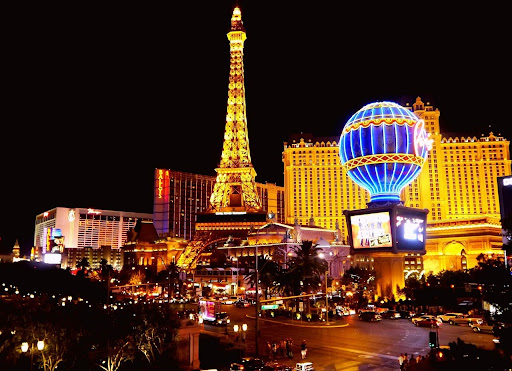 High in protein and omega fatty acids, relatively low in fat, and healthy for both heart and brain, it’s no wonder that fish is the protein of choice these days. But its popularity could be one of its downfalls.
High in protein and omega fatty acids, relatively low in fat, and healthy for both heart and brain, it’s no wonder that fish is the protein of choice these days. But its popularity could be one of its downfalls.
Overfished waters and toxic waste is responsible for making some of our most popular fish dangerous to eat, especially for pregnant women, babies, and children.
Where does the mercury come from?
Mercury itself isn’t bad; it occurs naturally at low levels in rock, soil, and water. But about half of all mercury released into the atmosphere today comes from the burning of fossil fuels like coal, oil, natural gas, as well as contributions from waste incineration, mining, and other industries. This mercury pollution falls directly into the ocean and other bodies of water or land where it washes into waterways. Bacteria then converts the mercury as it is carried down from the ocean surface, into a highly toxic form called methylmercury. The methylmercury then accumulates in the tissue of the fish. The bigger and older the fish, the more toxic it is.
The dangers of mercury
Mercury affects the nervous system and the brain, especially in fetuses and young children whose brains aren’t fully developed. If you’re pregnant and consume seafood that is contaminated, the mercury in your body passes to the fetus. The mercury can also be passed on to your infant through breastfeeding. Brain damage, mental retardation, coordination issues, blindness, seizures, and the inability to speak are all potential side effects of methylmercury consumption. Children poisoned by mercury may develop neural and digestive problems, along with kidney damage. In a new study, it was discovered that people who eat a lot of fish contaminated with methylmercury, such as tuna, had high levels of mercury in their blood and hair samples. Symptoms included hair loss, fatigue, depression, difficulty concentrating, and headaches.
How to eat fish safely
If you want to consume fish occasionally, choose wild Alaskan salmon and refrain from seafood high in mercury like tuna, swordfish, tilefish, King mackerel, and shark. Also, nearly all shellfish contains traces of mercury, so limit your intake. The FDA and EPA say pregnant women may safely consume up to 12 ounces a week of two average-sized portions of salmon, pollock, cod, and catfish.
Overfishing is a complicated problem with no easy answers. Your best bet is to make friends with a reputable fishmonger who will be more up-to-date on the shortages and dangers in your region’s seafood.
Recipe: Baked Wild Salmon with Lemon and Mango Salsa
A friend from Lima, Peru shared this delicious recipe with me. It originally called for tuna, but given the high mercury in tuna, I adapted it for salmon. There’s a lot to gain from salmon’s rich, heart-healthy omega fatty acids. My Peruvian friend recalled that his grandmother who lived with his family made this simple dish every Sunday for family brunch. The mango not only adds an exotic tropical flavor, it also contains digestion-assisting enzymes and cancer-preventing phenols. These are good tastes that are good for you! The salsa is great to serve over fish or chicken, and will last for up to 3 days in the refrigerator.
Mango Salsa
Serves 4
1 cup diced mango
1/3 cup diced, peeled cucumbers
1/3 cup sliced red bell pepper
2 tablespoons chopped fresh mint
2 teaspoons freshly squeezed lime juice
Salmon
1/2 lemon
1 (1-1/4-pound) skin-on wild salmon fillet, rinsed and patted dry
1 cup mango salsa
Combine the mango, cucumbers, bell pepper, mint and lime juice in a bowl and chill.
Preheat the oven to 475 degrees and position a rack in the center of the oven. Line a baking pan with parchment paper.
Squeeze the lemon juice onto the parchment paper. Cut the salmon into four equal pieces. Set the salmon, skin side down, on the paper lined pan and spread the salsa evenly over the tops of the fillets. Bake for 10 to 12 minutes, or until the salmon’s cooked through. Serve warm.
May you live long, live strong, and live happy!
Dr. Mao, best known as Dr. Mao is a bestselling author, doctor of Oriental Medicine and board certified anti-aging expert. He has recently appeared on The Ricki Lake Show, Dr. Oz, and contributes to Yahoo Health and The Huffington Post. Dr. Mao practices acupuncture, nutrition, and Chinese medicine with his associates at the Tao of Wellness in Santa Monica, Newport Beach and Pasadena. Dr. Mao and his brother, Dr. Daoshing Ni, founded the Tao of Wellness more than 25 years ago in addition to founding Yo San University in Marina del Rey. To subscribe to his tip-filled newsletter please visit www.taoofwellness.com. To make an appointment for evaluation and treatment call 310.917.2200 or you can email Dr. Mao at contact@taoofwellness.com.





















